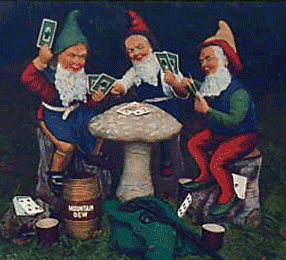 |
Progress Publishing Co. |
 |
|
Bingo Basics |
 |
Progress Publishing Co. |
 |
|
Bingo Basics |

![]()

![]()
Bingo Basics
*******************************************************************
Bingo Cards
Bingo Balls
Bingo Equipment
Bingo Personnel
*******************************************************************
Bingo Cards
In order to play Bingo a player has to purchase a Bingo card. A Bingo card has 5 horizontal and 5 vertical rows forming twenty five squares. Twenty four of those squares are filled with numbers from 1 to 75. The center square is a “Free” space without a number. The word “Bingo” is printed on top of the card. Each letter is positioned above the corresponding vertical column. Letter “B” is above the first column, letter “I” is above the second column etc…The numbers in the Bingo card squares are organized according to a simple rule. Numbers 1 through 15 can be found only in the first column under the letter “B”. Numbers 16 through 30 can be found in the second column under the letter “I”. The third column corresponding to the letter “N” contains only the numbers from 31 to 45. The column “G” is for the numbers 46-60 and the last column under the letter “O” holds the numbers 61-75. Below is the picture of a typical Bingo card.
| B | I | N | G | O |
| 2 | 18 | 32 | 47 | 63 |
| 7 | 20 | 35 | 48 | 64 |
| 11 | 21 | Free | 50 | 69 |
| 5 | 29 | 40 | 55 | 71 |
| 9 | 16 | 41 | 56 | 72 |
Bingo Card
Bingo Balls
This organization of the numbers on the Bingo card makes the game easier for the players and faster for a Bingo establishment. All numbers with the corresponding letters are painted on the ping pong balls, which are randomly drawn. When a ball is pulled out the number and accompanied letter are announced. For ex, the announcement “G47” means that the number 47 has been randomly picked and it can be found in the “G” column. That helps a player to look for a number in a correct column and check fast if he has that particular number or not.
Bingo Equipment
Bingo equipment necessary to run the game includes Bingo cards, Bingo Balls, a device for random choosing of the numbers and other equipment.
Sometimes Bingo cards sold to the players come in different colors. Different colors mean different prices. For ex, a green colored card may cost $1 when the price of a red card will be $2. In this case, if a winning pattern will be filled on a red card, a player will get a prize two times bigger than if it was won with a green card. Players can buy Bingo cards in packs of different colors.
The Bingo cards can be made of plastic or cardboard. The matched numbers on the cards can be crossed by a marker or can be covered by plastic chips or by Bingo cards self-contained tabs.
Another piece of equipment is a device for random picking of the numbers. There are two types of those devices – the “blower” and the “cage”. The numbers are painted on the ping pong balls. The balls are placed into the “blower” or a “cage” from which they are propelled by the air pressure or pulled by the force of gravitation into a part called “gooseneck”. After that the balls are taken from the gooseneck and placed on another piece of Bingo equipment – the master board. The placement on the master board automatically triggers Bingo equipment called the flashboard. In result, the Bingo balls’ numbers are illuminated for all the players to see and verify the results.
Bingo Personnel
Bingo personnel are an operator of the game, a cashier, an announcer or a “caller”, the “runners” (spotters) and other employees.
An operator of the Bingo game organizes and runs the game. An operator can be a casino, a church, an institution or a charitable organization.
A cashier sells Bingo cards to the players, pays off winning cards and, in general, is responsible for the flow of the money during the games.
An announcer or a “caller” has to announce a letter and a number of every Bingo ball drawn. He also announces the type of the game to be played explaining what winning patterns are required to be filled on the Bingo cards. A caller informs the players about the prizes to be paid and conveys all other information relevant to the game.
The runners or spotters have to verify that correct winning pattern was filled when a player shouted “Bingo”. They take the card to the announcer who also confirms the result. After that the winning Bingo card is given to a cashier to be paid.
Copyright Progress Publishing Co. 2006